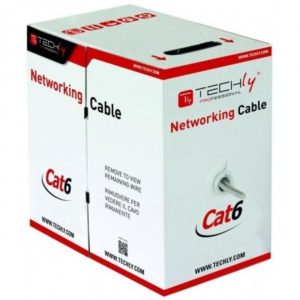Network Cables
Showing the single result
Network Cables
Networking cables are a type of networking hardware used to connect a network device to one or more other network devices, or to connect two or more devices to a single computer or network device. Network cables act as a medium through which information and data travel from one network device to another.
What is Network Cable
a network cable is a type of cable wiring used in telecommunation that relays data from individual computers to a larger network mainframe. Sometimes these cables are external, and can be used to do things like plug computers into Internet modems or grounded ports. They can also be part of a larger infrastructure, and in these cases are often built into walls along with things like electrical working in order to provide ready access to Internet and cable television services. When it comes to technical specifics there are a number of different varieties, but the most common tend to be twisted pair, coaxial, ethernet, and fiberoptic. Not all are interchangeable, and each is usually best suited for a specific purpose, so anyone looking to buy a cable or to install it for a specific project is usually wise to do a bit of research before making an investment
What Are Networking Cables?
The networking cable is also known as the networking media . We use the network cable to interconnect two or more computers either directly or through a networking device.
Advantages of Wired Networks
- Stability and Reliability.
- Faster Speeds and High Connectivity.
- Better Security.
- Accessibility.
- Inconvenience Due to Lack of Mobility
- May Require More Time to Install.
- Larger Infrastructures Require More Maintenance.
- Slight Inconvenience Due to Too Many Cable
As wireless networking becomes more popular in the computing world, many people are starting to wonder about the advantages and disadvantages of network cables. While wireless is a convenient technology, it still has a way to go before it can become the corporate alternative to network cabling. But cables have their downside as well, and before you invest in a technology to wire your office network, consider the many aspects of using network cables. Being Organized
Most network cables are run under the floor or through a drop ceiling and then down a cable drop to the various rooms of the office. When new equipment gets added or workstations get moved, it may be necessary to run more cable. When cables go bad, and they are installed for long distances under a floor or in a ceiling, many times a new cable will be put in place without removing the old one. After a while this collection of cables can get confusing. It can also add to the time it takes to do an equipment move if the cables are not properly marked.
Most network cables are run under the floor or through a drop ceiling and then down a cable drop to the various rooms of the office. When new equipment gets added or workstations get moved, it may be necessary to run more cable. When cables go bad, and they are installed for long distances under a floor or in a ceiling, many times a new cable will be put in place without removing the old one. After a while this collection of cables can get confusing. It can also add to the time it takes to do an equipment move if the cables are not properly marked.
Security
Wireless networking has made advances with security issues, but network cables still offer the most secure connection from a network to a workstation. A shielded network cable has a single connection to that server or workstation that no other workstation can see. A wireless network sends out a signal that can be encrypted, but it also easier for criminals to hack in


